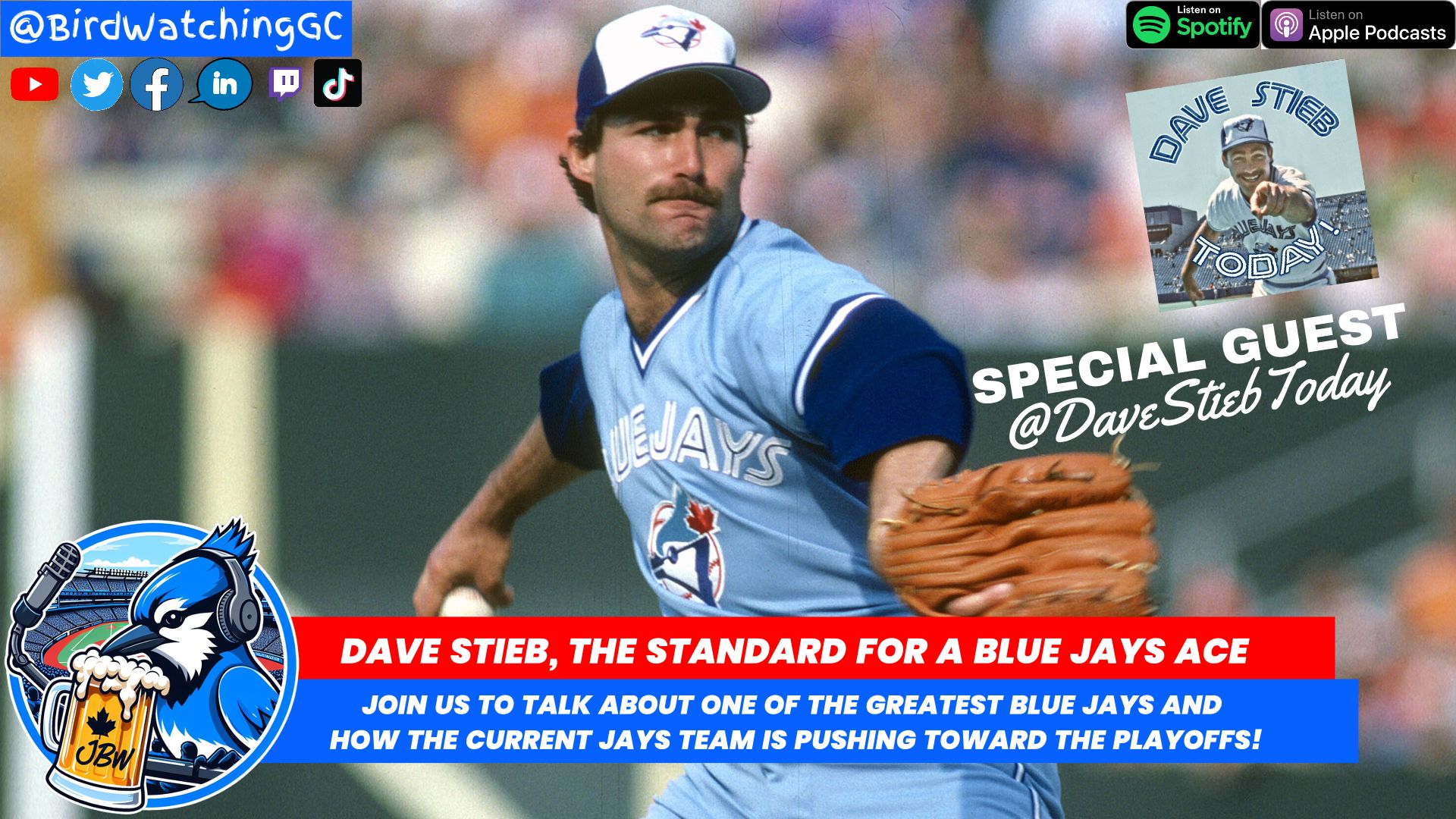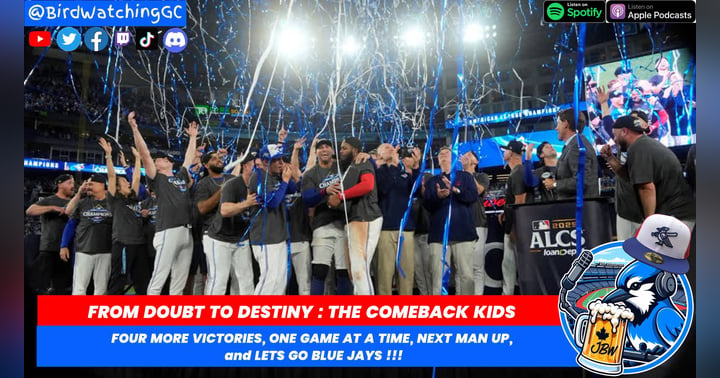No. 37 Belongs in Cooperstown, How To Get Dave Stieb To Cooperstown

When it comes to Toronto Blue Jays legends, few names evoke as much reverence—and as much debate—as Dave Stieb. On the latest episode of the Jay Bird Watching Podcast, hosts Craig Borden, Liz McGuire, and Jason Lyons welcomed Blake and Len from , two lifelong fans and historians whose mission is clear: get Dave Stieb’s number retired and his name enshrined in Cooperstown.
What followed was a passionate, stat-rich, and often hilarious conversation that reminded listeners why Stieb remains one of the most underappreciated pitchers in Major League Baseball history.
For the full podcast episode, please go to and subscribe for future updates. Audio can be found on any site you receive your podcast pleasures from as well.
🧢 The Dave Stieb Era: More Than Just Nostalgia
Blake and Len didn’t just grow up just watching Dave Stieb, they’ve spent decades chronicling his career. From building a fan site in the late ’90s to launching a full-fledged Twitter campaign, their dedication is rooted in one simple truth: Stieb was the backbone of the Blue Jays’ rise to relevance.
“He was the first real figure in the team’s history to say, ‘Losing sucks, and we’re not going to tolerate it,’” Blake said. “He wasn’t just a great pitcher—he was a culture-changer.”
That culture was building the foundation of what was to come and much of that was on the shoulders of Stieb and is a franchise cornerstone to this day. Stieb was at the core to the progress that eventually led to back to back World Series wins for the Toronto Blue Jays.
📉 Media Blind Spots & Cy Young Snubs
Despite leading the league in WAR multiple times and throwing over 2,300 innings in the 1980s, Stieb never won a Cy Young Award. Why? According to Len, it was a combination of media bias, outdated metrics, and geographic invisibility.
“Writers didn’t know Canada existed,” Len joked. “He suffered no fools when it came to the media, and that didn’t help his case.”
In 1982, Stieb lost the Cy Young to Pete Vuckovich—who had nearly as many walks as strikeouts and a higher ERA. “It was criminal,” Blake added. “Vuckovich pitched to extraordinary luck. Stieb pitched to dominance.”
Stieb had by far the best WAR (Wins Above Replacement) and threw 19 complete games in the 1982 season. The fact that he was not even an All-Star that season is also adding to the criminal case of how over looked a player he was.
| Rank | Name | Tm | Vote Pts | 1st Place | Share | WAR | W | L | W-L% | ERA | G | GS | GF | CG | SHO | SV | IP | H | R | ER | HR | BB | IBB | SO | HBP | BK | WP | BF | WHIP | ERA+ |
|---|---|---|---|---|---|---|---|---|---|---|---|---|---|---|---|---|---|---|---|---|---|---|---|---|---|---|---|---|---|---|
| 1 | Pete Vuckovich | MIL | 87.0 | 14.0 | 62% | 2.8 | 18 | 6 | .750 | 3.34 | 30 | 30 | 0 | 9 | 1 | 0 | 223.2 | 234 | 96 | 83 | 14 | 102 | 1 | 105 | 5 | 0 | 6 | 971 | 1.502 | 114 |
| 2 | Jim Palmer | BAL | 59.0 | 4.0 | 42% | 4.8 | 15 | 5 | .750 | 3.13 | 36 | 32 | 1 | 8 | 2 | 1 | 227.0 | 195 | 85 | 79 | 22 | 63 | 1 | 103 | 4 | 1 | 2 | 920 | 1.137 | 129 |
| 3 | Dan Quisenberry | KCR | 40.0 | 4.0 | 29% | 3.3 | 9 | 7 | .563 | 2.57 | 72 | 0 | 68 | 0 | 0 | 35 | 136.2 | 126 | 43 | 39 | 12 | 12 | 2 | 46 | 0 | 0 | 1 | 529 | 1.010 | 159 |
| 4 | Dave Stieb | TOR | 36.0 | 5.0 | 26% | 7.6 | 17 | 14 | .548 | 3.25 | 38 | 38 | 0 | 19 | 5 | 0 | 288.1 | 271 | 116 | 104 | 27 | 75 | 4 | 141 | 5 | 1 | 3 | 1187 | 1.200 | 138 |
| 5 | Rick Sutcliffe | CLE | 14.0 | 1.0 | 10% | 5.7 | 14 | 8 | .636 | 2.96 | 34 | 27 | 3 | 6 | 1 | 1 | 216.0 | 174 | 81 | 71 | 16 | 98 | 2 | 142 | 4 | 1 | 6 | 887 | 1.259 | 140 |
📊 Hall of Fame Metrics That Matter
Modern sabermetrics paint a different picture. Analysts like Bill James, Joe Posnanski, and Tom Tango have revisited Stieb’s career and found that he could have won three or four Cy Youngs if judged by today’s standards. Posnanski even coined the term “Cy Stiebs” to re-award pitchers who were snubbed in their era.
“Stieb tilled the soil,” Blake said. “He paved the way for guys like Jacob deGrom and Paul Skenes—elite pitchers with modest win totals but undeniable dominance.”
During the 2004 Baseball Hall of Fame vote Stieb only gathered 1.4% of votes to be enshrined in Cooperstown. Not collecting at least 5% of votes meant that would be his only appearance on the ballot in 2004. Paul Molitor and Dennis Eckersley were enshrined that year. Comperable players that have been enshrined in Cooperstown to Stieb are Jack Morris and Bert Blyleven.
🔥 Pitching Across Eras: Stieb vs. Scherzer
One of the episode’s most compelling segments was a hypothetical: Would Dave Stieb and Max Scherzer be best friends?
“Absolutely,” Jason said. “They’re both bulldogs. No showboating. Just get on the mound and get outs.”
Blake agreed, noting that Stieb’s mentality—pitching to his strengths, not the hitter’s weaknesses—mirrors Scherzer’s approach. “They weren’t chasing wins. They were chasing excellence.”
🏆 Why Stieb Deserves a Statue and a Spot in Cooperstown
Blake and Len’s mission is clear: retire No. 37 and get Stieb into the Hall of Fame. With the 50th anniversary of the Blue Jays approaching, they believe it’s time for the organization to honor its greatest pitcher.
“He’s #1 and 1A with Roy Halladay,” Len said to state the Level of Excellence that Stieb represents “One of then is in the Hall. The other should be.”
They’re hopeful that the recently founded Era Committee for the Baseball Hall of Fame will finally give Stieb the recognition he deserves. But they also know that fan support—and organizational backing—will be crucial to making this a reality! This committee has already righted some wrongs in Hall of Fame voting in recent years as they have enshrined Dick Allen and Dave Parker in the hall of baseball immortals.
📣 Join the Movement
If you’re a Blue Jays fan who believes in honoring greatness of players like Dave Stieb, follow on social media. Share the stats, the stories, and help make sure that Dave Stieb’s legacy gets the spotlight it’s long overdue for.










